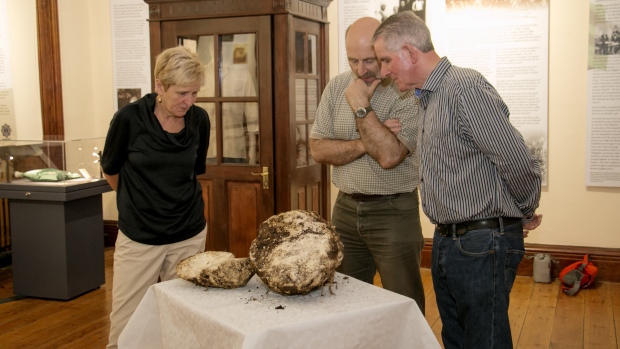Worried about too many packaging of left-overs in your freezer; well following paragraphs are going to change the way you look at your stored food for good. We come across astonishing new discoveries and archaeological findings all the time.
However some findings – though very rarely – leave the best of experts perplexed and often baffled. While performing his daily chores, a worker accidently discovered a 2,000- years- old lump of butter weighing more than 22lbs; and the bizarre thing about the giant butter lump is that it is still edible.
Jack Conway, who is a turf cutter from the peaceful Northern Irish town of Maghera, stumbled upon the prehistoric butter reserve while he was working on Emlagh bog. The dairy product, according to Conway did not smell foul; rather it was giving a nice cheese-like smell and was not unpleasant at all.
The initial response by the experts was that some ancient locals might have buried it to preserve it using some old preservation techniques. However considering its possible time period it is safe to say that this could have been a religious offering to some deity in return of prosperity and security of the land.
The site of the discovery is also very significant; the massive lump was unearthed from the region of Drakerath, which is located on the cross section of the boundaries of three ancient baronies.
The theory of the religious offering became more plausible when Andy Halpin weighed in on the matter; Halpin is the assistant keeper in Irish Antiquities Division of the museum. According to Halpin these bogs in the ancient times were not a common place; these bogs in Drakerath area were practically inaccessible and were considered mysterious places with supernatural powers.
Due to the precise location of these bogs – the intersection of three ancient kingdoms – the region was a kind of no man’s land and slowly gained a reputation of a spiritual open shrine where people occasionally came to seek solitude or leave offerings to please the deities. Commenting on the lump’s edible aspect, Halpin said that although the stuff is edible, this does not mean of course that it must be consumed.
After making the astonishing discovery and unearthing the butter which was buried 12 feet below the ground, Jack Conway contacted the officials at the Cavan County Museum. After receiving the specimen and finishing the initial analysis; the lump of ancient butter was then safely transported to the National Museum; where it was analyzed in detail and also carbon dated for its correct age.
The phenomenon of ‘bog butter’ was very common in the antiquity, and the examples of such practices could be traced to as late as 1800’s. Back in the days, the butter was made without any salt, which left it vulnerable to the elements and it got expired very quickly. People used to bury the butter in peats in order to preserve it and then used to dig it up whenever they needed a bit of butter.
The only difference between the Conway’s butter and other bog butter, is that it was discovered without any cover, which means that whoever buried it did not intend to dig it back up to reuse.
These kinds of discoveries are very common in Scotland and Ireland, says the curator of Cavan County Museum Savina Donnohoe. She added that upon receiving the lump they could instantly tell it was a dairy product due to its sheer buttery smell which was surprisingly fresh; though it looked horrible, they later found out that the butter was, in fact, edible.
Image source: Cavan County Museum
